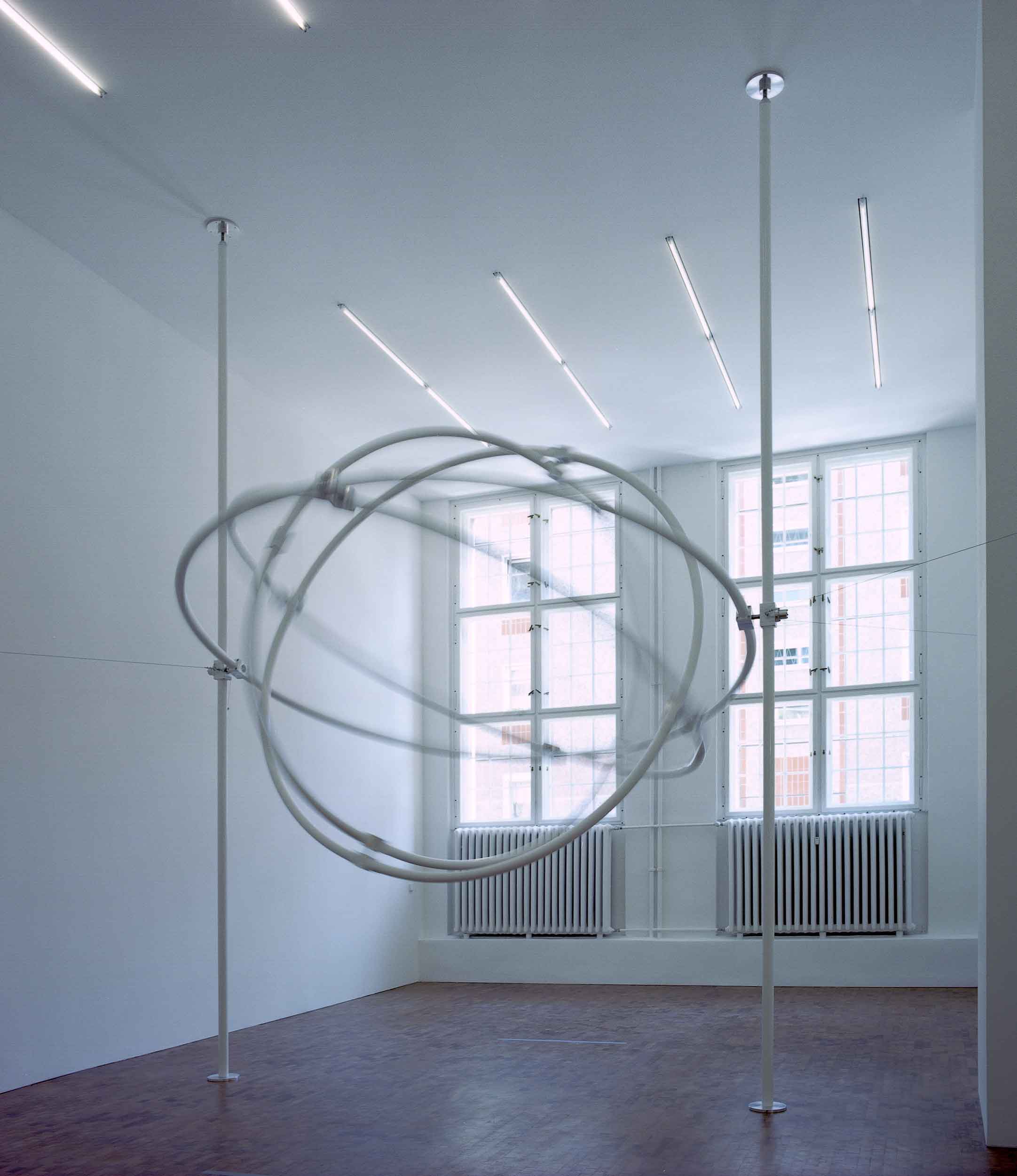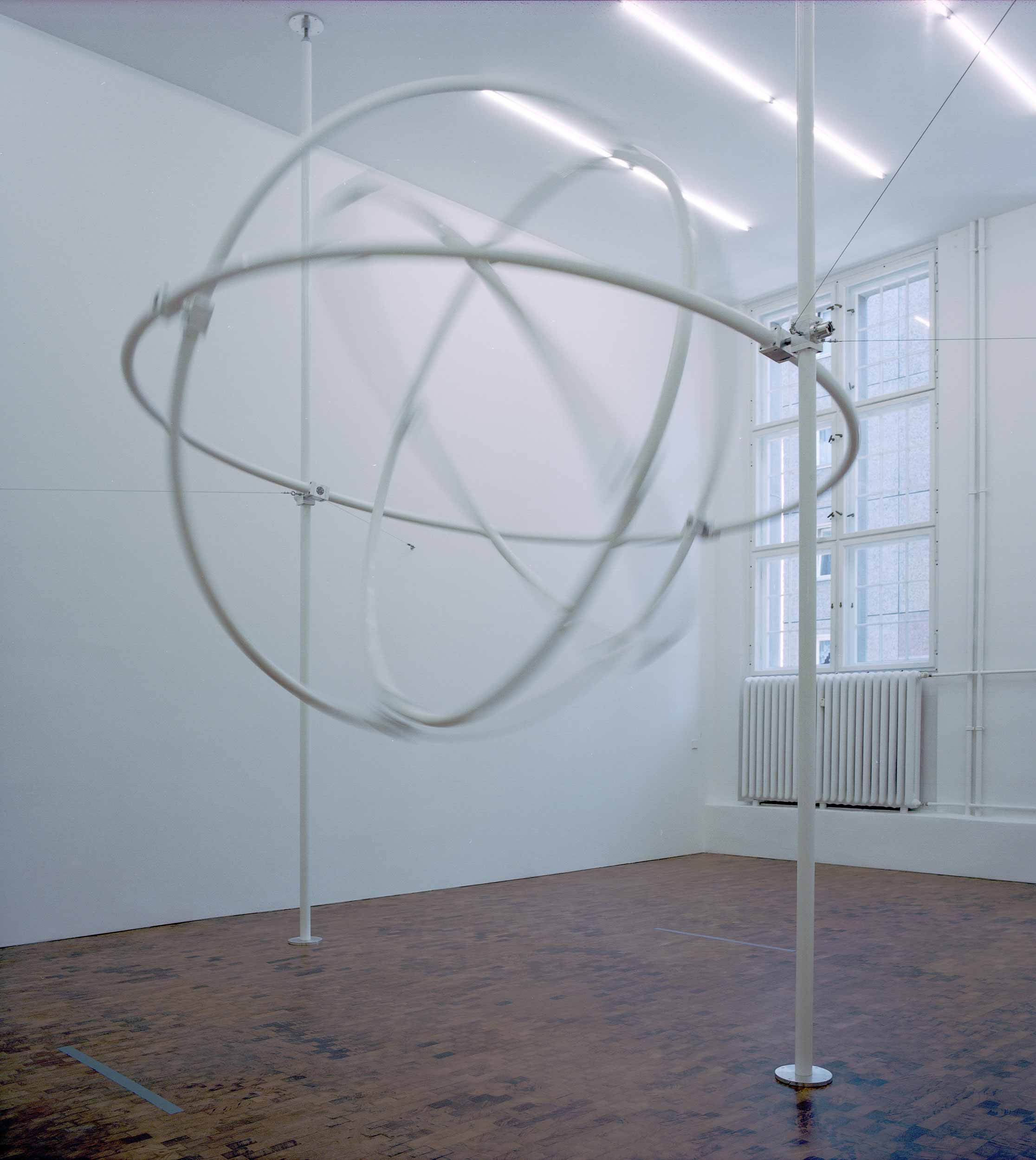Berlin
2005
New works:
Antigravity Model
Reel to Reel
An interest in motion patterns and the introduction of random factors into their often highly complex, still
seemingly effortless installations is a constituent element of the work of the artist duo Tommi Grönlund and
Petteri Nisunen from Helsinki. In their second gallery exhibition they present two installations which more
than ever deal with the mutual dependence of single components forming a system.

Antigravity Model
In the main exhibition space a spheric construction made of white, powdercoated aluminium hovers in the air,
suspended on two pillars halfway between floor and ceiling. Four interlocked rings of more than 3 metres in
diameter can be set into motion by simply giving them a gentle push. Moving slowly and effortlessly, they
orbit each other and the centre of the exhibition space.
The construction is a hybrid between a gyroscope and a gyrocompass, both of them tools created to deal with
gravity, surveying, mapping and therefore interpreting space. The installation brings to mind Early
Renaissance architectural models of a pre-Kopernikus planetary system, where the sun and other planets revolve
around earth on wire orbits, while the earth itself stands still. Just like those delicately executed models
which still didn't resemble reality, the system created by Grönlund - Nisunen can be seen as a model, as well.
As an attempt to arrive, making use of motion, to a description and depiction of space or rather non-space?
After all, the centre orbited by those aluminium rings is empty.



Reel To Reel
In the adjoining room, 16 metal discs are arranged in a freestanding metal frame, connected by rubber belts, and powered by an electric motor. If one part moves, they all do. Since the driving collars attached to the discs offer different positions for placing the rubber belts, the discs rotate at different speeds. Light from behind the sculpture shines through slots in the rotating discs and creates a projection of the movement on the opposite wall.


Both works are kinetic experiments, in the case of the spheric installation, due to its complexity it wasn't possible to conduct a test run. In the course of the exhibition it will become clear weather the movements follow repetitive patterns or take a random course.
